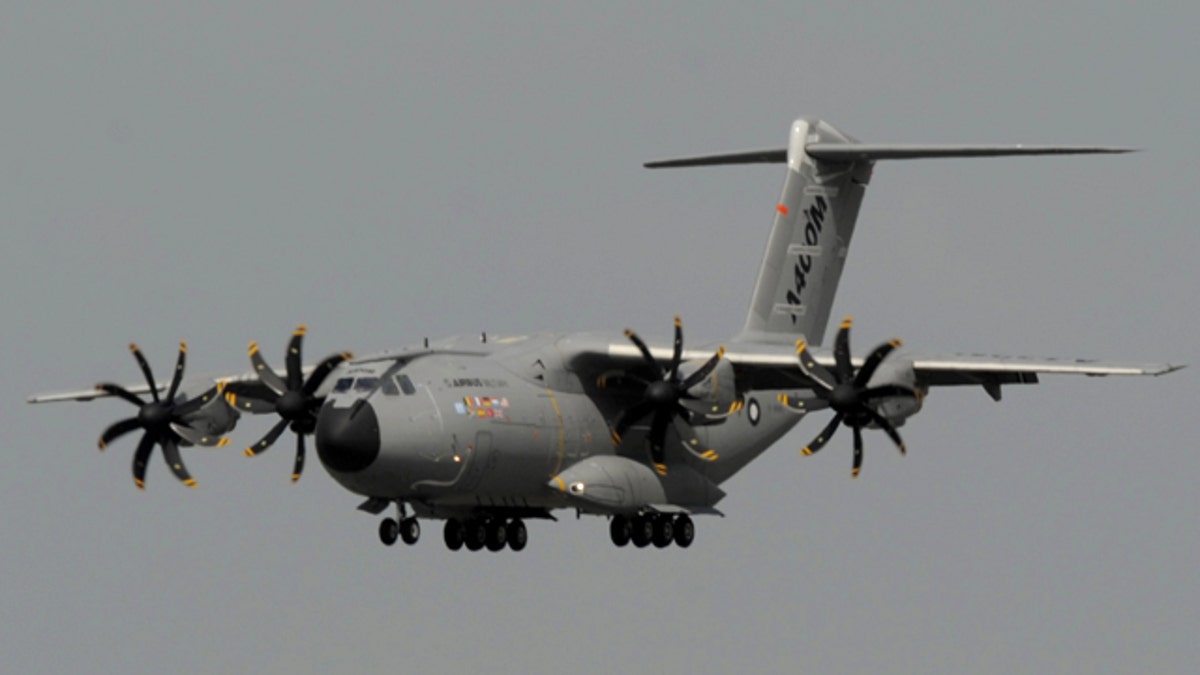
The military transport Airbus A400M lands at the airfield prior to the start of the International Air Show ILA at Schoenefeld airport in Berlin on Monday, June 7, 2010. Visitors will be able to get an exclusive first glimpse of the aircraft, the all-new airlifter for the 21st century and Airbus Military's latest development. (AP Photo/Jens Meyer)
The A400M won't change how German troops land in a place like Afghanistan -- but it will change how fast they can get there.
Touching down in a war zone, and especially a war zone flung across the Hindu Kush, is not for the fainthearted. First, you never know which way the pilot will choose to descend. If he goes for a combat descent, the plane will dive out of the sky, dipping its nose sharply toward the ground.
Sitting sideways on a bench on the Transall C-160, the A400M's chubby-nosed predecessor, your slide toward the front of the plane is stopped only by a simple strap around your belly. You feel a violent pressure in your ears. This is normally the moment when even the last sleepers wake. It is also the moment you might hear an explosion or two near the wings -- hot flares fired off to lure away any heat-seeking rockets shot at the plane.
Other times the pilot brings the plane down by executing a steep, tight corkscrew maneuver. Sometimes he descends by flying straight and turning corners, as if flying along the edges of a box. Other landings are as smooth and easy as the touchdown of a commercial airliner at the airport of a holiday resort.
The element of surprise is deliberate: pilots in war try to avoid patterns.
Airlift is the long arm of military power. It is about getting boots and amour on the ground fast and then keeping supply lines open. "If you can move troops and weapons quickly, it is one of the adages of war that you can do things with relative ease on day one that by day 50 are much more difficult," says Air Chief Marshall Sir Brian Burridge, who led British forces into Iraq in 2003 and is now at Italian defense firm Finmeccanica.
LEFT FOR THE LADIES
Everybody loves the Transall, but it struggles to get boots on the ground where it matters in 2010. Built during the cold war to serve in the European theater, it has a short range, limited capacity and only two engines. Crucially, it cannot travel to the German camp in the northern Afghan town of Feyzabad because the climb out of the deep mountain valley presents too many risks for a plane with just two engines.
Right now, the Germans have to fly to Feyzabad in transport helicopters which means a terrain-hugging flight 8 to 10 meters above the ground across mountains and valleys. If the soldiers want less of a roller coaster ride, they catch a lift on one of the four-engined Hercules owned by the U.S. or Canada.
Inside, the Transall, a Franco-German joint venture which ended production in 1985, is pretty raw: naked craftsmanship without the nice covers, seats and carpets you expect on a commercial plane. Parachutes and ancient breathing devices hang from the walls of the plane.
There's no proper toilet. If you really need to go then head to the back of the plane and, right before the back ramp, turn left if you're a woman, right if you're a man. The loadmaster will flip down a plastic device for you, a kind of toilet seat with a box underneath, and pull a curtain for privacy.
It's not as bad as it sounds -- you just have to make sure the curtain stays closed and the plane doesn't fly into turbulence.
The A400M won't be a huge step up -- military planes are not built for luxury. But where it matters -- range and size -- the new transporter can't come soon enough.
